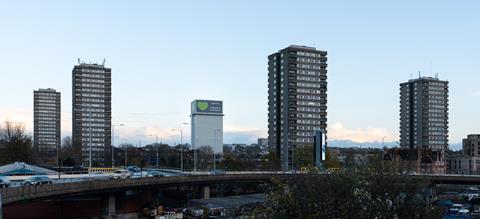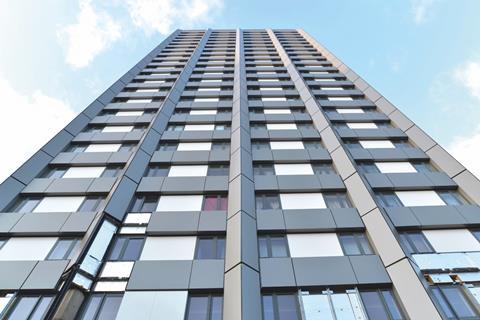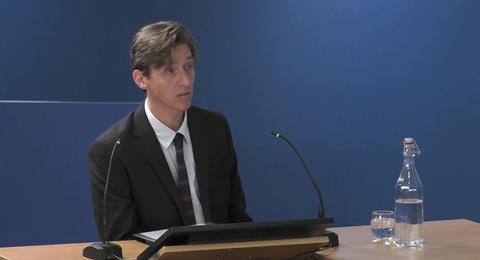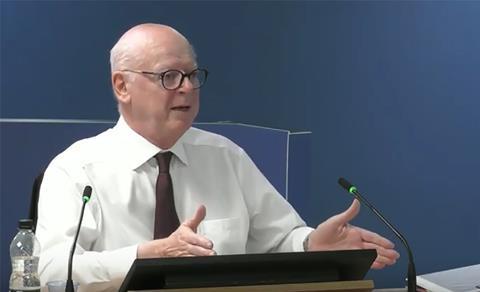Inquiry found practice fell “well below the standard to be expected of a reasonably competent architect”

Among the firms facing the most serious criticism in the Grenfell Inquiry report is the now defunct architectural practice, Studio E. Its role in the design of the refurbishment - particularly in the selection of materials and the external cladding - has been the focus of damning findings.
The Grenfell Tower Inquiry has found that Studio E fell “well below the standard to be expected of a reasonably competent architect” and that its failures in relation to the design and material selection “had catastrophic consequences.”
Studio E’s role and responsibility

As the lead architect and designer, Studio E was appointed in 2012 and tasked with overseeing the refurbishment of Grenfell Tower, including the design of its facade. The Inquiry concluded that Studio E bore primary responsibility for the design of the external wall, a crucial element in the disaster. The firm’s role also extended to coordinating other consultants, sub-contractors, and specialists. Despite these extensive responsibilities, the report found that Studio E fundamentally misunderstood the scope of its obligations.
One key area where the Inquiry criticised the firm was its assumption that sub-contractors and suppliers were responsible for ensuring that the materials selected for the facade met fire safety standards. This led to significant oversights.
According to the report: “Studio E appears to have laboured under a fundamental misunderstanding about the nature of its obligations… assuming without enquiry that the work of others met the required standards.” In reality, says the report, Studio E had an overriding duty to ensure that all materials specified for the project were suitable and compliant with building regulations. The firm’s failure to fulfil this duty was one of the Inquiry’s most damning findings.
Studio E’s lack of experience and failure to compensate
One of the root causes of Studio E’s failure was its lack of experience in refurbishing or overcladding high-rise buildings. The report highlights that “none of the existing partners or employees had the relevant knowledge, experience or skills that would be needed” for a project of this nature.
Although this was a new type of project for the firm, the Inquiry noted that architects are often expected to take on work outside their usual expertise—but with the caveat that they must seek out appropriate specialist advice. In the case of Studio E, this did not happen. The report found that a lack of rigour in addressing knowledge deficits proved fatal in the context of a project that demanded expertise and caution.
More on the Grenfell Inquiry Phase 2 report
Grenfell Inquiry report: Studio E “bears a very significant degree of responsibility” for disaster
Decades of central government failure led to Grenfell tragedy, says inquiry
Material specification and failure to check fire safety compliance
Studio E’s selection of materials for the external cladding system is highlighted as another serious point of failure. The firm specified combustible materials, including ACM panels and Celotex FR5000 insulation, without taking the necessary steps to ensure that these materials met fire safety standards. This, the Inquiry stated, was a “significant failure” on Studio E’s part.
The Grenfell Inquiry was particularly scathing in its assessment of Studio E’s negligence in ensuring the compliance of these materials with the relevant building regulations. “Studio E specified Celotex FR5000 for use in the external wall without giving any consideration to whether the resulting structure would comply with functional requirement B4(1),” the report stated, referring to the regulation that mandates walls must adequately resist the spread of fire. Any competent architect, the report noted, “should have known, or at any rate should have taken the trouble to discover” that the materials they were proposing were combustible and unsuitable for use in a high-rise building.
Additionally, Studio E failed to act on warnings it had received. For instance, Leadbitter, a contractor, warned Studio E against the use of combustible insulation in 2013. This warning was not adequately followed up, and the combustible Celotex insulation remained part of the external cladding specification. The Inquiry found that Studio E’s decision to proceed with these materials without questioning their suitability was “reckless.”
Novation to Rydon and continued failures
In 2014, Studio E was novated to Rydon, the principal contractor for the refurbishment project. Novation effectively transferred Studio E’s contractual obligations from the Kensington and Chelsea Tenant Management Organisation (TMO) to Rydon, but it did not absolve Studio E of responsibility for the design and compliance aspects of the project. Despite this continued responsibility, the report states that Studio E adopted an alarmingly passive approach after the novation.
The Inquiry emphasised that under the novation deed, Studio E remained responsible for ensuring that “all designs complied with the relevant statutory requirements” and for coordinating work between sub-contractors, particularly in relation to material compliance. However, Studio E failed to check crucial design elements and materials after novation.

For instance, Studio E’s lead architect, Bruce Sounes, did not carefully review the BBA certificate for the Reynobond ACM panels that were eventually used on the tower. This certificate contained important information about the fire performance of the panels, and failure to review it in detail was a significant oversight. “Even though by that time Studio E’s services had been transferred to Rydon, it remained under an obligation to exercise reasonable skill, care, and diligence in the discharge of its services,” the report stated.
Paul Hyett, an expert witness at the Inquiry, was particularly critical of Studio E’s handling of the Reynobond panels. While he initially stated that it might have been reasonable for an architect to assume the material was compliant based on a cursory reading of the BBA certificate, he later revised his opinion.
“A reasonably competent architect would not read the statements on the first page in isolation from the rest of the document,” Hyett concluded, acknowledging that Studio E should have understood that the panels used at Grenfell Tower were not covered by the certificate because they were not the same colour or finish as those described. The report states that Studio E’s failure to investigate the fire performance of these panels was a serious error, contributing directly to the disaster.
Failure to ensure compliance with Building Regulations
A key responsibility of Studio E after novation was ensuring compliance with Building Regulations, particularly in relation to fire safety. The Inquiry found that Studio E’s understanding of its role in relation to the project was deeply flawed. The firm’s architects believed that checking the materials used for compliance with fire safety requirements was the responsibility of others, such as the sub-contractors and building control, but that this was not the case. The report states that Studio E was ultimately responsible for ensuring that all materials met statutory requirements.
The Inquiry also criticised Studio E for its failure to implement a comprehensive cavity barrier strategy - a critical element in controlling the spread of fire within the external walls of high-rise buildings. “Studio E failed to devise a proper cavity barrier strategy for the overcladding system,” the report stated, leading to “ever-increasing confusion” as the project progressed. The absence of adequate cavity barriers allowed fire to spread unchecked through the cladding system, accelerating the disaster.
Criticism of Paul Hyett as the Inquiy’s expert witness

Studio E’s criticism of Paul Hyett, the expert witness appointed by the Grenfell Tower Inquiry, was a notable aspect of the hearings. The architectural firm questioned Hyett’s qualifications to give expert testimony, particularly criticising his lack of direct experience with overcladding high-rise residential buildings. In its closing statement, Studio E argued that Hyett had “little or no personal experience of such work” and therefore should not be regarded as an expert in this context. They also contended that his views were skewed, claiming he ignored the fact that similar materials had been used on other projects overseen by reputable architects across the country.
However, the Inquiry rejected these criticisms, affirming Hyett’s credibility. Despite his limited direct experience with overcladding, the Inquiry highlighted his “long and distinguished career” and extensive knowledge of architectural standards. With over 40 years of post-qualification experience, including as the President of the Royal Institute of British Architects (RIBA), Hyett was deemed well-qualified to comment on Studio E’s conduct. The report concluded that Hyett’s evidence was “thorough and careful,” and it criticised Studio E for not producing any alternative expert evidence to counter his testimony, thereby affirming Hyett’s role as both valid and integral to the Inquiry.
















2 Readers' comments